Case studies
The case studies below are sorted by type, with clean technologies listed first, followed by companies focused on medical technologies. Note that it can be difficult to neatly categorise innovative products.
Opo Bio
Description
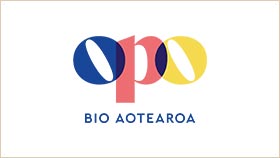 Opo Bio Aotearoa is a business-to-business (B2B) supplier of custom and affordable primary cell lines to researchers as well as the biomanufacturing industry. Available cell lines can be used to produce cultivated meat and collagen.1 Cells are sourced from healthy animals from Aotearoa New Zealand, including cows (Angus or wagyu), sheep, and pigs.2
Opo Bio Aotearoa is a business-to-business (B2B) supplier of custom and affordable primary cell lines to researchers as well as the biomanufacturing industry. Available cell lines can be used to produce cultivated meat and collagen.1 Cells are sourced from healthy animals from Aotearoa New Zealand, including cows (Angus or wagyu), sheep, and pigs.2
Status
- Founded in 2022.
- Currently active, in seed phase.
Regulatory challenges
As the cell lines produced by Opo Bio are designed to be used for food production, they must meet the food safety standards set out by Food Standards Australia & New Zealand (FSANZ) for sale locally. FSANZ is a trans-Tasman regulatory agency established by the Food Standards Australia New Zealand Act 1991 (FSANZ Act).3 Their food safety standards are enforced in New Zealand by the Ministry for Primary Industries (MPI) under the joint standards section of the Food Act 2014.4
The Australia New Zealand Food Standards Code looks to preserve human and animal health by ensuring that food is free of contaminants which may be pathogenic or toxic, contains only approved additives, is processed and handled hygienically, and is labelled and advertised appropriately.5 The cell lines from Opo Bio were classed as novel foods under Standard 1.5.1 of the Food Standards Code. To use them in a cultivated meat food product, the cell lines would have to be included as part of the FSANZ pre-market safety assessment of the food.6
As their cell lines are classed as animal products, Opo Bio applied to MPI for registration and certification as an animal products exporter. Registration is required for animal product exports, particularly those intended for human or animal consumption, under section 54 of the Animal Products Act 1999.7, 8 For approval, products must meet domestic standards under the Animal Products Act 19998, as well as general export requirements and standards of the importing country (OMARs: Overseas Market Access Requirements).9 Opo Bio found the process of obtaining export certificates to be particularly slow, due to the novelty of the product and lack of existing approval pathways, waiting more than six months without knowing if the application would eventually be approved.
Dot Ingredients
Description
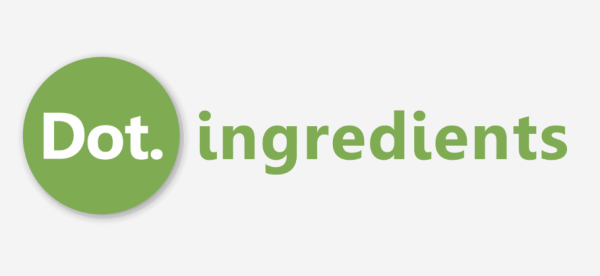 Dot Ingredients (formerly Spherelose) is developing an alternative to traditional petroleum or palm oil-based surfactants using cellulose modified with plant oils. Surfactants consist of particles with a lipophilic (oil-loving) side and a hydrophilic (water-loving) side, which mediate interactions between oil and water and allow them to mix. The Dot Ingredients surfactant consists of 100-200 nm wide cellulose particles from wood pulp, which are hydrophilic, that are modified with a non-toxic plant oil like canola oil, which is lipophilic.10, 11 The cellulose comes from offcuts from the sustainable timber industry, and is fully biodegradable and non-toxic. By adjusting the proportion of the cellulose covered with plant oil, the properties of the surfactant can be altered for different applications (detergents, defoaming agents, wetting agents, emulsifiers, etc).12 Dot Ingredients is currently targeting the cosmetics market, due to high demand for ethically sourced materials, and the relatively low cost of regulatory compliance.
Dot Ingredients (formerly Spherelose) is developing an alternative to traditional petroleum or palm oil-based surfactants using cellulose modified with plant oils. Surfactants consist of particles with a lipophilic (oil-loving) side and a hydrophilic (water-loving) side, which mediate interactions between oil and water and allow them to mix. The Dot Ingredients surfactant consists of 100-200 nm wide cellulose particles from wood pulp, which are hydrophilic, that are modified with a non-toxic plant oil like canola oil, which is lipophilic.10, 11 The cellulose comes from offcuts from the sustainable timber industry, and is fully biodegradable and non-toxic. By adjusting the proportion of the cellulose covered with plant oil, the properties of the surfactant can be altered for different applications (detergents, defoaming agents, wetting agents, emulsifiers, etc).12 Dot Ingredients is currently targeting the cosmetics market, due to high demand for ethically sourced materials, and the relatively low cost of regulatory compliance.
Status
- Founded 2024.
- Currently active, in seed phase.
Regulatory challenges
Within the cosmetics industry, it is favourable to register new products as INCI (International Nomenclature of Cosmetic Ingredients), as this classification demonstrates the novelty of the product. However, registering a new ingredient may require additional regulatory approvals, including safety testing in certain countries. This safety testing creates regulatory-related difficulty when selecting a target market for cosmetics. China requires animal testing for some cosmetics to determine the LD50 (median lethal dose), governed by the National Medical Products Administration (NMPA)13, while the EU expressly forbids animal testing for cosmetics, under Article 18 of EU Regulation 1223/2009. China has allowed some cruelty-free cosmetics to be sold since 2021, but requires a Good Manufacturing Practice (GMP) certificate from the "competent government department" in the country of origin. The current issuer of GMP certificates in NZ is the trade association Cosmetics NZ, which is not currently considered a competent government department.13 Market access in both regions can be preserved by simply registering the product as a cellulose derivative, but this may undersell the novelty of the product to potential customers.
Dot Ingredients has designed their surfactant so that the cellulose particles fall outside the parameters of what is typically considered a nanoparticle. Under EU Regulation 1223/2009, pursuant to Recommendation 2011/696/EU, the EU definition of a nanoparticle for cosmetic purposes is "an insoluble or biopersistent particle... with one or more external dimensions, or an internal structure, on the scale of 1 to 100 nm". However, article 2 paragraph 3 notes that this definition is subject to change, dependent on "technical and scientific progress" and "definitions... agreed to at the international level". Falling outside of this scope significantly reduces the regulatory conditions required for the use of the surfactant as a cosmetics component in the EU market. For a more detailed discussion of nanoparticle classification in various jurisdictions, please refer to the May 2021 intern report on nanomaterials from the Office of the Prime Minister's Chief Science Advisor.14
A major advantage and selling point of Dot Ingredient's product is its biodegradability. To ensure that this major claim was valid, Scion Research was contracted to test the product's biodegradability against the international standard ISO 14855-1. This standard describes the biodegradability of materials under controlled composting conditions through monitoring the percentage conversion into carbon dioxide, and the rate of this conversion process.15 It was found that the novel surfactant achieved 93% biodegradation in 180 days, which was sufficient to validate their biodegradability claims.12
Zincovery
Description
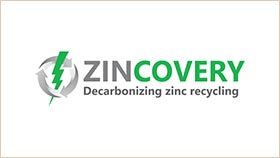 Zincovery Process Technologies Ltd have developed a novel zinc recycling process which dramatically lowers the carbon emissions required to produce a set quantity of zinc. Their custom low-temperature, low-power hydrogen furnace technology breaks down zinc-containing furnace dust from steel mills into simpler forms, without requiring carbon-intensive coal or fossil fuel inputs. Subsequent acid leaching and electrochemical extraction steps can then be used to produce high-purity zinc ingots.16, 17 After successful trials at the pilot stage, Zincovery is currently looking to set up a demonstration plant locally (see discussion below).
Zincovery Process Technologies Ltd have developed a novel zinc recycling process which dramatically lowers the carbon emissions required to produce a set quantity of zinc. Their custom low-temperature, low-power hydrogen furnace technology breaks down zinc-containing furnace dust from steel mills into simpler forms, without requiring carbon-intensive coal or fossil fuel inputs. Subsequent acid leaching and electrochemical extraction steps can then be used to produce high-purity zinc ingots.16, 17 After successful trials at the pilot stage, Zincovery is currently looking to set up a demonstration plant locally (see discussion below).
Status
- Founded 2019.
- Currently active, in seed phase.
Regulatory challenges
In the search for a location for their demonstration plant, Zincovery investigated the suitability of various international jurisdictions. New Zealand was ultimately chosen for the demonstration plant location, with resource consent timeframes significantly simpler and more efficient than in other jurisdictions, including the EU. Land-use resource consent and building consent in New Zealand are provided by local and regional councils, and are currently governed under the Resource Management Act 199118, 19, 20 (currently under review)21 and the Building Act 2004.22 There are still time-intensive elements of this consenting process. Council permits cover a range of site features including earthworks, wastewater and chemical storage, and all features must be approved before work can start on a single feature.
To demonstrate their technology at scale, Zincovery requires steady access to imported furnace dust from overseas steel mills. However, this dust is classified as hazardous waste, and is therefore covered by import restrictions that aim to prevent improper disposal of such waste. These restrictions are governed by the NZ Environmental Protection Agency (EPA)23, defined under Schedule 3 Part 2 of the Imports and Exports (Restrictions) Prohibition Order (No 2) 200424, in line with the international Basel Convention.25 Only a very small amount of waste may be imported before an EPA permit is required. This is an involved process and requires Environmental Liability insurance for a permit to be approved. Both the permit and insurance require detailed knowledge of the logistics of the waste being transported; given the location of New Zealand relative to other OECD partners, this may involve knowledge of arrival and departure times and dates across many ports, increasing planning complexity.26
The time-intensive nature of permit application (6-7 months) led to Zincovery’s initial steel mill partner withdrawing from their agreement. While waiting for the permit, Zincovery imported individual 20 kg samples of waste, each falling below the threshold for requiring an EPA permit (although still covered by regulations for transporting hazardous goods under the HNSO Act 1996).27, 28
To set up their demonstration plant in New Zealand, Zincovery requires large storage tanks for process chemicals. Under the HNSO Act 199628 and the Health and Safety at Work (Hazardous Substances) Regulations 201729, process containers for hazardous substances must be certified by a compliance certifier.30 However, Zincovery found that there were few certifiers in New Zealand available to provide them with certification, and they had long waiting lists, pushing out their certification timeline. It is possible to purchase pre-certified containers, however, Zincovery found that these were many times more expensive than a self-sourced container.
China requires animal testing for some cosmetics to determine the LD50 (median lethal dose), while the EU expressly forbids animal testing for cosmetics.
Boutiq
Description
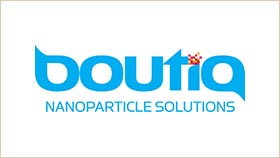 Boutiq Science Ltd produced custom nanomaterials with unique properties for R&D and engineering applications. Sales were typically made within the medical space, where nanoparticles were used as magnetic tracers for medical imaging applications.31, 32 In 2016, Boutiq was spun out as Ferronova, an Australia-based company which uses magnetic nanoparticles as tracers to track the spread of cancer to the lymph nodes.33, 34
Boutiq Science Ltd produced custom nanomaterials with unique properties for R&D and engineering applications. Sales were typically made within the medical space, where nanoparticles were used as magnetic tracers for medical imaging applications.31, 32 In 2016, Boutiq was spun out as Ferronova, an Australia-based company which uses magnetic nanoparticles as tracers to track the spread of cancer to the lymph nodes.33, 34
Status
- Founded 2011.
- Inactive, spun out as Ferronova in 2016 (currently in series A2 phase).
Regulatory challenges
To supply their product for medical applications to international researchers, Boutiq first needed to get their product clinically approved. However, the national medical regulator Medsafe does not yet have an internationally recognised regulatory process for clinical trials.35
The EU CE certification process was therefore pursued. It was initially unclear whether the technology was a medical device or a drug, with each classification leading to different regulatory pathways for CE certification. At the time, the magnetic nanoparticle tracers were treated as a device together with the surgical pen that was used to detect them, and it was intended that the finished product would follow the international standard ISO 13485. This standard describes the Quality Management System (QMS) required for medical devices to obtain a CE mark under EU Regulation 2017/745, article 32.36 To pursue regulatory compliance, Boutiq had to ensure the nanoparticles were both biocompatible and sterile, which was a significant technical challenge.
Chitogel
Description
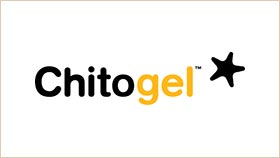 Chitogel produces a chitosan-based hydrogel formulation for sinus wound dressing after endoscopic sinus surgery. This novel polymer gel, known as “Chitogel”, is a less invasive alternative to inserting surgical packing into the sinus post-surgery, where removal of this packing is an extremely painful process. Chitogel not only acts as a physical barrier to bleeding, but also improves wound healing, prevents scarring, and enhances the sinus microbiome.37, 38 The Chitogel Endoscopic Sinus Surgery Kit, launched 2019, is currently being distributed in the USA, Australia and New Zealand.39 They next plan to bring products to market for treating the inner ear and for spinal laminectomies.
Chitogel produces a chitosan-based hydrogel formulation for sinus wound dressing after endoscopic sinus surgery. This novel polymer gel, known as “Chitogel”, is a less invasive alternative to inserting surgical packing into the sinus post-surgery, where removal of this packing is an extremely painful process. Chitogel not only acts as a physical barrier to bleeding, but also improves wound healing, prevents scarring, and enhances the sinus microbiome.37, 38 The Chitogel Endoscopic Sinus Surgery Kit, launched 2019, is currently being distributed in the USA, Australia and New Zealand.39 They next plan to bring products to market for treating the inner ear and for spinal laminectomies.
Status
- Founded 2014.
- Currently active, in pre-series A phase.
Regulatory challenges
Chitogel first obtained regulatory approval for the Chitogel Endoscopic Sinus Surgery Kit from the FDA as a Class 1 (low risk) medical device to sell to the US market. The device was given Class 1 status as an intranasal splint under the US Code of Federal Regulations (CFR), Title 21, Part 874. To obtain approval for a FDA Class 1 device, Chitogel had to demonstrate to regulators that the gel met the FDA General Controls for Medical Devices.40 Under Section 501 of the Food, Drug, and Cosmetic Act (FD&C), medical devices must contain no adulterants, such as “filthy, putrid, or decomposed” substances. In practice, this meant Chitogel needed to demonstrate no infectious microbes were present in their product.
It was found that distilled and Milli-Q ultrapure water were insufficiently free of microbial contaminants for safe use in the gel, and specially prepared water was used instead. Furthermore, the dextran and chitosan components of the gel are both carbohydrate polymers like those found in bacterial cell walls, leading to false positives when testing for bacterial fragments. Chitogel therefore had to prove to regulators through extensive testing that the carbohydrates detected did not indicate that the gel was contaminated with bacteria. Efficacy and safety data were used to produce several publications.41, 42
To break into the Australian market, EU CE certification was also obtained to expedite approval by Australia’s Therapeutic Goods Administration (TGA). Since the gel is shellfish-based, obtaining CE approval was more difficult due to additional regulations around medical devices utilising tissue of animal origin. These requirements are covered by EU Regulation 722/2012. Under this regulation, manufacturers must present a risk management strategy for preventing transmission of prion diseases and other pathogens through their product. They must justify the use of animal tissue over non-animal components, and they must show that their animal tissue is responsibly sourced, alongside providing detailed evidence of product quality and safety.
The Chitogel manufacturing facility was also designed to meet international standard ISO 13485 for CE certification. ISO 13485 describes the Quality Management System (QMS) necessary for medical devices to obtain a CE mark under EU Regulation 2017/745, article 32.36 EU auditors were brought in to confirm that the facility met the ISO standard.
Inhibit Coatings
Description
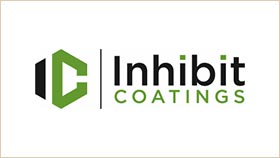 Inhibit Coatings Ltd create high-performance antimicrobial coatings by adding silver nanoparticles to various polymers.43 The silver nanoparticle formulation used is strongly antimicrobial; it kills over 650 types of microorganisms including coronavirus, E. coli, and influenza A. The nanoparticles are not simple additives, but are chemically bound within the custom polymers, meaning that they cannot leach into the surrounding environment or lose potency over time. The non-toxic formulation can therefore be used to keep various surfaces free of microbial contamination without risks for human health.44 The current focus for Inhibit Coatings is the use of their product as a component of the polymers used in medical devices.45
Inhibit Coatings Ltd create high-performance antimicrobial coatings by adding silver nanoparticles to various polymers.43 The silver nanoparticle formulation used is strongly antimicrobial; it kills over 650 types of microorganisms including coronavirus, E. coli, and influenza A. The nanoparticles are not simple additives, but are chemically bound within the custom polymers, meaning that they cannot leach into the surrounding environment or lose potency over time. The non-toxic formulation can therefore be used to keep various surfaces free of microbial contamination without risks for human health.44 The current focus for Inhibit Coatings is the use of their product as a component of the polymers used in medical devices.45
Status
- Founded 2016.
- Currently active, in pre-series A phase.
Regulatory challenges
Inhibit initially explored multiple different market niches for their technology, including its use as a marine antifouling coating, or as an industrial surface coating. Inhibit was able to operate in some of these niches in NZ by following the self-classification framework of the NZ EPA. However, in the US, antimicrobial coatings must undergo approval before use by the US EPA under the US Federal Insecticide, Fungicide, and Rodenticide Act (FIFRA).46 Along with the testing required for traditional pesticides, the EPA also requires further safety and efficacy testing for antimicrobial pesticides.47 This can be a lengthy process depending on the active ingredient, and can involve expensive safety testing.
However, antimicrobials for use in medical devices fall under the FDA’s Federal Food, Drug, and Cosmetic Act (FD&C Act), and unless the use-case is food-related, FIFRA no longer applies.48 While safety and efficacy data still needs to be provided to the FDA, there are no specific regulations around medical device raw materials, making this approach an easier route to market. Inhibit has taken the approach of generating safety and biocompatibility data to support the use of their materials.
For industrial coating applications, Inhibit took a dual approach to seeking approval for their formulation under FIFRA. They submitted a "Me Too" application for silver, which is already registered as an "active ingredient" under FIFRA, as well as a new active ingredient approval, specifically for a polymer silver composite. If the silver and polymer formulation is treated as an active ingredient, it is considered novel and has to undergo a full approval process. This process can take between three and five years, with registration and testing costs in the order of hundreds of thousands of dollars.
It was important to consider all formulation components, however: FIFRA states that everything apart from the active ingredients must be considered inert ingredients or polymers of low concern. Inhibit was using off-the-shelf polymers, meaning they needed to obtain data from the manufacturers which demonstrated that their polymers were polymers of low concern, as well as formulation information for the inert ingredients.
To supply their product for medical applications to international researchers, they first needed to get their product clinically approved. However, Medsafe does not yet have an internationally recognised regulatory process for clinical trials.
References
Clean technologies
Opo Bio
- Opo Bio Aotearoa | Experts in cell line research and development - Opo Bio Aotearoa.
- Buy cells - Opo Bio Aotearoa.
- Food law, treaties and agreements - Food Standards Australia New Zealand.
- Food Act 2014 No 32 (as at 02 March 2018), Public Act Contents - New Zealand Legislation.
- Food Standards Code legislation - Food Standards Australia New Zealand.
- Novel foods - Food Standards Australia New Zealand.
- Register as an exporter - Ministry for Primary Industries.
- Animal Products Act 1999 No 93 (as at 06 April 2023), Public Act - New Zealand Legislation.
- Requirements for exporting animal products - Ministry for Primary Industries.
Dot Ingredients (formerly known as Spherelose)
- Technology - Spherelose.
- On a mission to disrupt the US$45 billion global surfactant industry with greener alternatives - The MacDiarmid Institute.
- Benefits - Spherelose.
- What you need to know about cosmetics regulations in China - myNZTE.
- Professor Dame Juliet Gerrard 2018-2021 - Department of the Prime Minister and Cabinet (DPMC).
- ISO 14855-1:2012 - Determination of the ultimate aerobic biodegradability of plastic materials under controlled composting conditions - Method by analysis of evolved carbon dioxide - Part 1: General method.
Zincovery
- Technology - Zincovery.
- NZ deep-tech startup raises $3m for zinc recycling - Newsroom
- What is a resource consent? - Ministry for the Environment.
- Applying for a resource consent - Ministry for the Environment.
- Resource Management Act 1991 No 69 (as at 25 October 2024), Public Act Contents - New Zealand Legislation.
- RM reform update - May 2024 - Ministry for the Environment.
- Building Act 2004 No 72 (as at 26 November 2024), Public Act Contents - New Zealand Legislation.
- Hazardous waste including e-waste - Environment Protection Authority.
- Imports and Exports (Restrictions) Prohibition Order (No 2) 2004 (SR 2004/202) (as at 30 August 2024) Contents - New Zealand Legislation.
- The Convention overview - The Basel Convention on the Control of Transboundary Movements of Hazardous Wastes and their Disposal.
- Importing hazardous waste - Environment Protection Authority.
- UN numbers and transporting dangerous goods - Environment Protection Authority.
- Hazardous Substances and New Organisms Act 1996 No 30 (as at 23 December 2023), Public Act - New Zealand Legislation.
- Health and Safety at Work (Hazardous Substances) Regulations 2017 (LI 2017/131) (as at 23 December 2023) - New Zealand Legislation.
- Stationary tanks and process containers - WorkSafe.
Medical technologies
Boutiq
- Dr Anna Henning: Embracing a Boutiq opportunity: Leading nanomaterials from the lab to the world - KiwiNet.
- Embracing a 'Boutiq' opportunity - Te Herenga Waka - Victoria University of Wellington.
- About Ferronva - Ferronova.
- FERRONOVA: a commercialisation journey through time - Microscopy Australia.
- Conducting Medical Device Clinical Trials in New Zealand - Medsafe.
- ISO 13485:2016 - Medical devices - Quality management systems - Requirements for regulatory purposes.
Chitogel
- Our Product - Chitogel.
- J. M. Barber, G. Bouras, G. S. Robinson, and S. R. Robinson, Chitogel improves long-term health economic outcomes following endoscopic sinus surgery in severe chronic rhinosinusitis patients, Front. Heal. Serv., vol. 4, 2024, doi: 10.3389/frhs.2024.1196499.
- About Chitogel - Chitogel.
- General Controls for Medical Devices - US Food & Drug Administration.
- R. Valentine, T. Athanasiadis, S. Moratti, S. Robinson, and P. J. Wormald, The efficacy of a novel chitosan gel on hemostasis after endoscopic sinus surgery in a sheep model of chronic rhinosinusitis, Am. J. Rhinol. Allergy, vol. 23, no. 1, pp. 71–75, Jan. 2009, doi: 10.2500/AJRA.2009.23.3266.
- R. Valentine, T. Athanasiadis, S. Moratti, L. Hanton, S. Robinson, and P. J. Wormald, The efficacy of a novel chitosan gel on hemostasis and wound healing after endoscopic sinus surgery, Am. J. Rhinol. Allergy, vol. 24, no. 1, pp. 70–75, Jan. 2010, doi: 10.2500/AJRA.2010.24.3422.
Inhibit Coatings
- Inhibit Coatings: Antimicrobial coatings for food & beverage safety - Wellington UniVentures.
- Our Next Generation Antimicrobial Technology - Inhibit Coatings.
- Antimicrobial Medical Polymers - Inhibit Coatings.
- Antimicrobial Pesticides - United States Environment Protection Agency.
- Antimicrobial Pesticide Registration - United States Environment Protection Agency.
- Pesticide Registration Manual: Chapter 4 - Additional Considerations for Antimicrobial Products - United States Environment Protection Agency.
Pages in this section
Regulatory navigation home | Insights and comments | Case studies | Future directions | About this work


